Working with 19th century processes, Holga cameras, digital technology, and traditional photographic investigations, Jerry Cargill continues to investigate a medium in transition from analog to digital. The COMP Magazine recently sat down with Cargill in Logan’s Square to discuss why photography holds such strong affinities with experimentation, what he values in the image making process, and his evolving role as an educator.
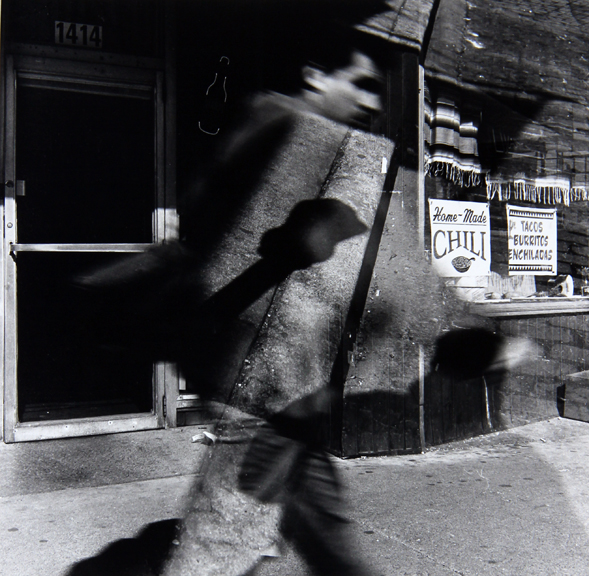
Jerry Cargill, Pancho, Chicago, Gelatin Silver Print, 1994
We’ve known each other for around 20 years. In your early work, you were photographing with a twin-lens reflex camera, then double exposing. This technique has roots in the experimentation practiced by I.D. photographers (e.g., Harry Callahan). You appear to hold a continued interest in experimentation and a revisiting of past technical practices. Can you share with us your interest and use of somewhat antiquated processes?
Isn’t there a bit of Bauhaus in every photographer? There is always at least a modicum of mystery as to what is going to result at the end of the process, which starts at the opening of the shutter and ends with the finished print. Experimentation has to be a part of any image-making. I think everyone does some experimenting in their work, but some photographers do a lot more extreme visual experimentation. I did double exposures as my thesis project at Columbia. I still do some double exposing and overlapping of frames with my students when we use the Holga. I’ve made a few overlaps in my nudes project.
I don’t think any way to make an image is obsolete as long as it exists as a different way to represent the world. Each method re-presents a subject in its own way. I think you have to have that Bauhaus attitude: find out what can this particular medium do and capitalize on each set of unique qualities of each medium. Even the act of composing in a square, which you do in the Rolleiflex as well as the Holga, is a different experience and of course a different image than the wide rectangle. I wish someone would make a digital twin lens camera.
A couple of years ago I went to the opening of the Lomo store in Wicker Park. I asked the manager if he thought that the popular Instagram filters would hurt the toy camera movement. He told me that it was just the opposite, that people become interested in film through Instagram. The virtual experience of that type of image making led to the desire to have the actual experience of using film. I asked my darkroom students last spring how they felt about making images in the darkroom. They all said they enjoyed it One girl said “it’s like Instagram, but real”. Young people, although very wired, are craving analog experiences. Also, as long as someone is using a method, it is not obsolete.
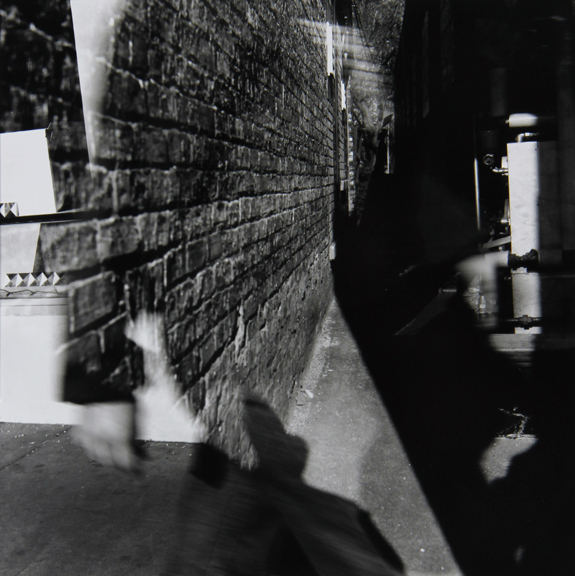
Jerry Cargill, Jacket, Chicago, Gelatin Silver Print, 1995
You are found of the Holga camera. Can you tell us why you continue to work with this relatively unpredictable and cheap camera?
I have always liked Holga’s playful, whimsical but sometimes enraging unpredictability. The ‘surprise’ of what comes out is really addictive to me, not just with toy cameras but with every part of photography. There is that initial magic of the first time that you see an image develop out in the developer tray. Perhaps it is that same feeling that makes us pursue the new, the next thing that gives you an endorphin rush. But on that not so positive side, I have shot a lot of film that ended up severely scratched or fogged because of the Holga’s craptastic quality. For some people they just roll with those errors, but I’m too much of a print fetishist to print overtly and unintentionally damaged negatives.
Actually, I recently slowed my use of the Holga. I started using the Holga in 2000. I really was captivated at how the Holga optics re-presented the world. Also, the cheap plastic quality allowed a lot of experimentation with the lens and other parts of the camera. I have broken several of them. In 2010 I was assigned more and more digital photography courses to teach, I decided to buy a Canon 60D. The risk with staying lo-fi is that your higher-tech skills may atrophy and you miss significant changes. My Canon 60D has been a great teacher. The whole history of photography follows an evolution of the technology. With digital, that evolution has greatly accelerated. You can miss a lot to not be on that fast-moving train.
I became interested in portraiture when I was still doing landscapes. Sometimes you get the next big idea while you are in the middle of another one you’re currently working on.
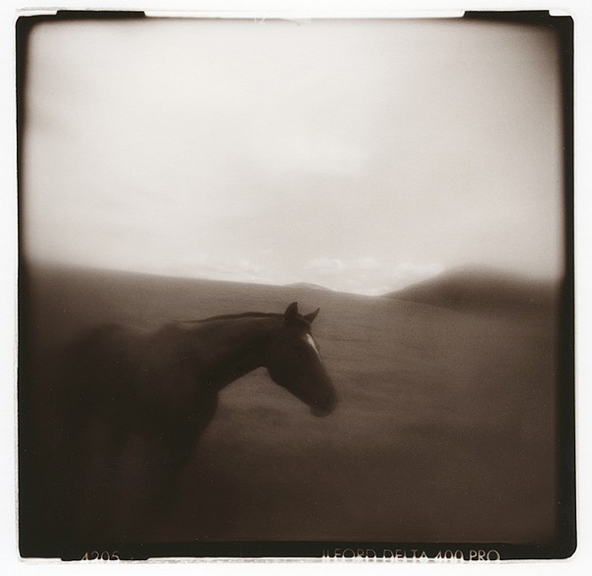
Jerry Cargill, Idaho 5, Chicago, Selenium-Toned Gelatin Silver Print, 2015
What do you enjoy in the process of photography?
As I said above, every process has its rewards and the new image gives a rush and encourages more image making.
I am mostly known for traditional work but I enjoy digital a lot. I like working in Photoshop but I also use RAW and Illustrator a bit. I use Photoshop for both manipulating and correcting, and after 23 years of using Photoshop I still am learning new techniques all the time. Photoshop and RAW give photographers a lot of power and control over the image and creates a lot of possibilities for new imagery. Because digital speeds up the production of imagery so much, I can cover a lot more ground as an educator.
I enjoy 19th Century processes. Sensitizing the paper and printing out an image is really fun. What is great is that you can use a 4×5 or 8×10 negative to make these contact prints, or you can print out a digital negative on transparency plastic. I think that the hybrid possibilities are part of the fuel of the resurgence in popularity in salt prints, cyanotypes, tintypes and other traditional processes. Darkroom, digital, 19th Century processes, strobes, flashes: all tools in the photographer’s toolbox. When a school declares a process “obsolete”, they really lose something.
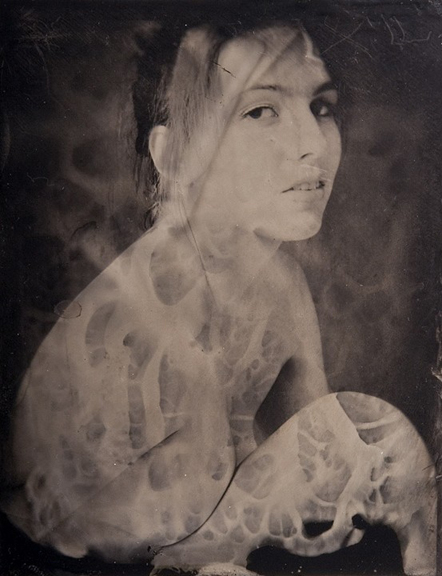
Jerry Cargill, Ashley 7, Chicago, Tintype, 2010
What do you find of interest in photographing the human form?
I am interested in everyday people, in people who are not what you’d think of as “model”. I like to come up with different angles but also use classic poses. I feel that I have hit my personal limit as to what I can do with nudes in the studio without being too cliché. I would like next to photograph people more in their natural environment, but have the controls of artificial lighting.
As far as influences, I would say that Katy Grannan’s Model American portfolio and Lee Friedlander’s Nudes portfolio have influenced me the most in the nudes project. Grannan’s for the everyday people and Friedlander for his unorthodox angles and poses.
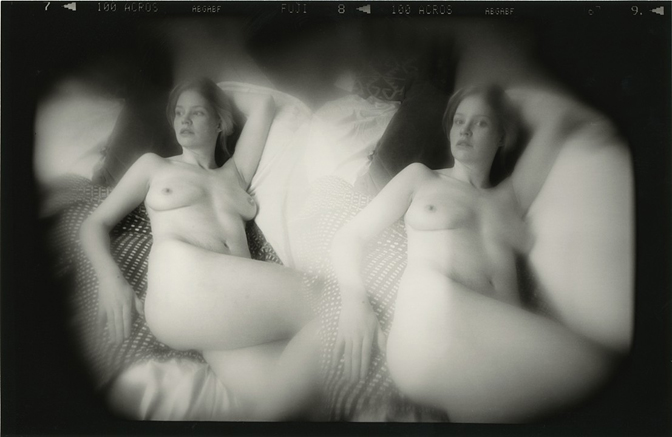
Jerry Cargill, Lindsay 1, Chicago, Selenium-Toned Gelatin Silver Print, 2013
The human form is found interesting or at least provocative by everyone. Last year a friend came by to look at my portfolio. After looking at my work she suggested a local gallery to approach adding that they were open to “erotic” work, which was strange because I did not view my work as erotic and also surprising because she shoots S&M and boudoir. So maybe there is something to my nudes that is more than ‘nude’ that I just did not see, or perhaps every nude has a bit of eroticism to it. Having pursued the nude genre, it has been interesting to see all the different reactions to my work when it is displayed. Ironically, people are very open to express their reactions to nudes, which are always very psychologically revealing. I just find the human form interesting, and want to re-present it in my own way. I have shot males and females, young and old people. It is very difficult to find middle age and senior female models, and conversely very easy to find older men who want to pose. I think that men lose their inhibitions about their body as they age, whereas society has told women to become more self conscious and ashamed as they age. So, again, this genre is very revealing about biases and hypocrisies.
When I photograph nudes I use the Holga as well as my DSLR. The latter’s digital files I have been printing out as digital negatives to make cyanotypes, tintypes and salt prints. What I like about the DSLR is that it is so versatile that I can use it to print as they did in the 1850s, or shoot corporate portraits in the studio for a friend as a favor which I recently did.
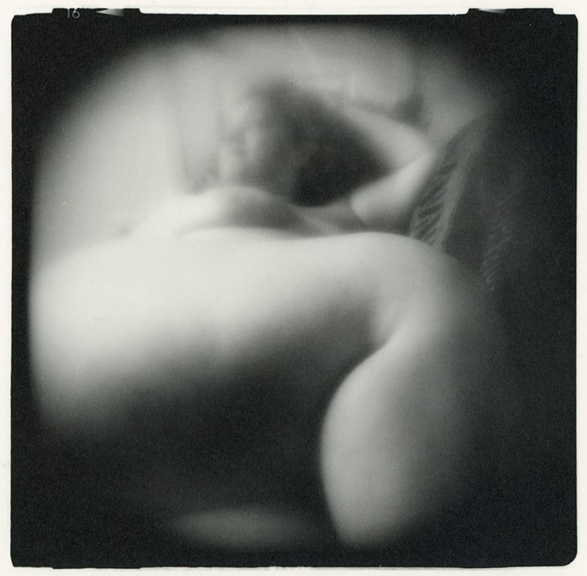
Jerry Cargill, Misha 5, Chicago, Selenium-Toned Gelatin Silver Print, 2013
As an educator, what items do you see of importance in the understanding contemporary aesthetic practices? What do you hope your students take from your teaching?
I try to expose my students to the whole history of photography. We take a field trip every spring to the MoCP where they look at a lot of contemporary photography they’ve never seen before. They see the contrast between modernism and early postmodernism which we usually focus on. They ask a lot of questions. For instance, they often ask why many contemporary photographers ignore rules of composition.
I know that most of my students will not be professional photographers, so it is my goal that they have a knowledge of the history of photography, including contemporary photographers. I also cover a wide range of genres including street photography and food photography, as well as a wide range of printmaking techniques: digital, darkroom, printing-out papers. I also have them maintain online portfolios in individual tumblr sites.
For myself, I have to be aware of history, including contemporary photographers. This is for teaching purposes as well as my own image-making. I think it is important to know what happened in the past as well as what is going on now because we need to borrow from the past and from the present to make new images. If a photographer is ignorant of that, how can there be new work?
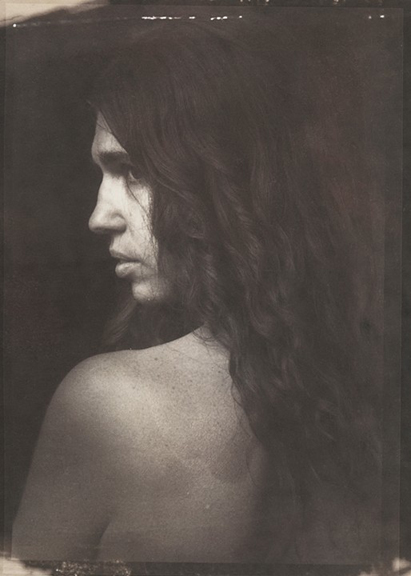
Jerry Cargill, Val, Chicago, Salt Print, 2012
So, what are you currently working upon? Do you have any specific plans for 2015?
When I was younger I felt like I had more time than ideas, now, at 46 I feel the opposite. I have a lot of ideas but less time. There are several things that I’d like to work on this year.
I am currently working on a small portfolio of photograms. It’s a side project for a print exchange I do with other high school art teachers every year. I use found objects, as well as textures and frames printed digitally on transparency plastic. It’s a fun diversion and reminds me of printmaking, which is what led me to photography back in high school.
Working on the Vivian Maier project got me interested in street photography and even more interested in people. I’d like to take pictures of people on the street, but I like the controls of the studio, I like being able to pose someone and control the lights. Maybe I can find some middle ground where it all works together.
I would like to continue more in portraiture, probably doing fewer nudes. But the nudes have been a continuing learning experience. Every genre has its own set of demands, which turn into lessons. I would like to further explore portraiture.
I still have a lot of digital nude exposures that I want to make into salt prints and tintypes. I have a problem of shooting too much for the time I have. I shot at least 600 rolls of film in the Holga landscape project, have printed about 100 prints and have at least another very good 100 negatives that could be printed. I shot 150 rolls of Holga nudes, have printed about 50 and could print about 40-50 more good prints. I should probably shoot and print less, and edit and print more. But I’m always excited about what is next. And to be blunt, my interest in printing flags if no galleries are interested, or if when exhibited in a gallery nobody is buying. I don’t like my work to pile up in totes, and to be burdened with storing it. The end of the process for me is when a photograph is framed on a wall.
In the long term, I would like to make a textbook about photography for high school students. Currently I am slowly writing and would like to publish an article about the toy camera aesthetic in contemporary photography. I would ultimately like to organize high school photography teachers more, perhaps forming an association of high school photography teachers to promote secondary photography education.
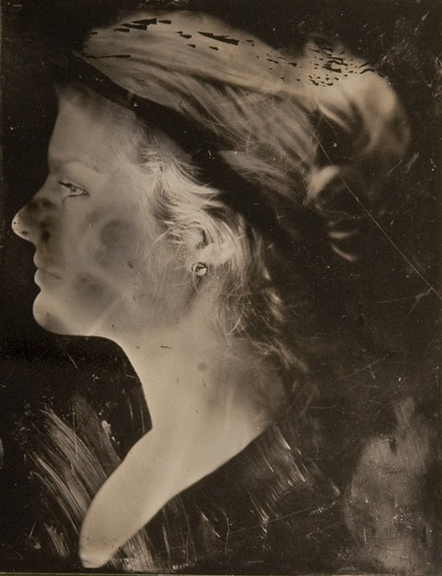
Jerry Cargill, Laura, Chicago, Tintype, July 2010
For additional information on the work of Jerry Cargill, please visit:
Jerry Cargill: www.cargillcontemporary.com
Interview by Chester Alamo-Costello


